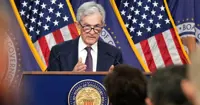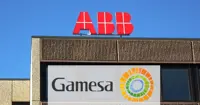Senate follows House in approving President Obama’s $800 billion-plus stimulus plan
11 Feb 2009
The US Senate has approved an $838 billion economic stimulus package that stands to become the most expansive anti-recession effort by the United States government since World War II.
The Senate on Tuesday voted 61-37 to pass the legislation, pushed by US President Barack Obama. Three Senate Republicans joined Democrats to pass the bill, after no Republicans voted for a House of Representatives version that passed on 28 January. (See: House passes rescue bill sans GOP backing) The Senate vote came as Treasury Secretary Timothy F Geithner announced a vast new rescue plan for the financial sector. Stocks plunged following the unveiling of the program to use $1.5 trillion or more in public and private funds to bail out banks and financial institutions and thaw frozen credit markets.
The Senate vote came as Treasury Secretary Timothy F Geithner announced a vast new rescue plan for the financial sector. Stocks plunged following the unveiling of the program to use $1.5 trillion or more in public and private funds to bail out banks and financial institutions and thaw frozen credit markets.
The plan would create a $500 billion fund to buy up toxic bank assets such as bad real estate loans and commit up to $1 trillion to reopen lending markets for consumer, student, small business, auto and commercial loans.
Democrats win cloture by single vote
The previous day, a vote had made it almost certain that US President Barak Obama's rescue package would pass through the Senate yesterday, but with minimal Republican support. The package as revised by the Senate would cost $838 billion, against the $819 billion that was passed by the Congress without a single Republican vote.
With the expected support of three Republican senators, President Obama's plan won a 'cloture' vote by a thin 61-36 margin, setting the stage for the final vote on Tuesday. This came a few hours before his prime time live press conference, which he used mainly to push for his plan.
Cloture, a legislative term, means bringing the debate to a quick end, stopping a 'filibuster'. The three Republicans who voted along with the Democrats were Susan Collins, Olympia Snowe and Arlen Specter.
"What I'm trying to underscore is what the people in Elkhart already understand, that this is not your ordinary, run- of-the-mill recession," Obama said in his hour-long news conference, referring to the recession-ravaged town in Indiana that he visited on Monday. He mentioned Elkhart eight times during the conference.
However, since there is a significant difference between the two legislations passed by the Senate and the House of Representatives, the leaders of the two chambers will have to sit together to make the bill into one by shorting their differences through a legislative process called conference. After that, both the Senate and the Congress would have to give their final approval to the bill before the president can sign it into a law.
House and Senate negotiators will work out the differences in the two bills. The Senate version of the bill, while larger overall at $838 billion than the House version's $819 billion, cut spending on a smart electricity grid and on health IT, compared to the House version.
The Senate bill includes $4.5 billion to improve the nation's electricity grid so that customers can measure their electricity use through web sites and, in some cases, sell back extra energy. Supporters of a smart energy grid say that the information made available can help customers cut their energy costs.
The House version of the bill includes $11 billion for a smart grid. The Senate bill also includes $3 billion to push forward adoption of health IT, including electronic health records. The House version of the bill includes $20 billion for health IT.
The Senate version of the bill includes $7.1 billion aimed at rolling out broadband to rural and other underserved areas, compared to $6 billion in the House version. Most of the money in the Senate package would go to grants for broadband providers; the House bill included a mix of grants and tax credits.
Among the major differences between the bills is the Senate's cut of $40 billion from a $79 billion state fiscal stabilization fund proposed by the House, to be used mostly for education services but also to help cash-strapped states meet their budget needs.
The Senate bill also includes a $70 billion provision to protect millions of middle-class Americans from having to pay the alternative minimum tax in 2009, which is not included in the House bill, although House leaders seem willing to accept it.
Despite numerous differences in the two bills approved in the Senate and the House, the overall scope of the economical recovery effort is now clear - sprawling in its reach, with tax cuts for individuals, families and businesses, assistance for jobless and low income Americans, aid to states, and huge spending on education, healthcare, energy and technology.
The package now heads to a House-Senate conference to resolve differences between the two versions. Obama, who hopes to sign the resulting bill into law before Presidents' Day on Monday, has publicly encouraged negotiators in recent days to restore some education provisions that were stripped from the Senate version to reduce its overall cost. (See: Obama steps up campaign for rescue bill)
Republican critics contended that plan was too expensive, included unhelpful spending programs and would saddle future generations of Americans with suffocating debt. They had called for a smaller package focused more on tax cuts.



.webp)



























